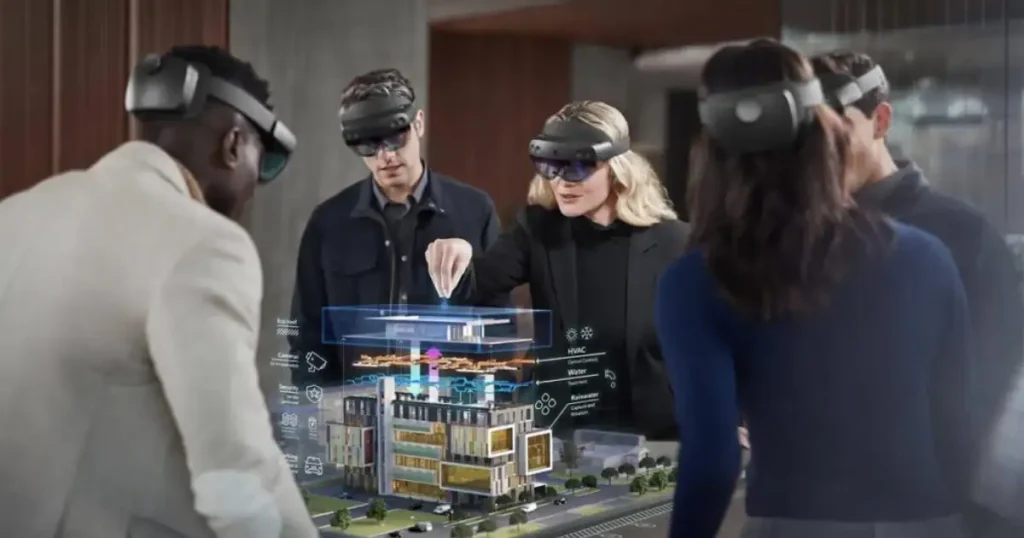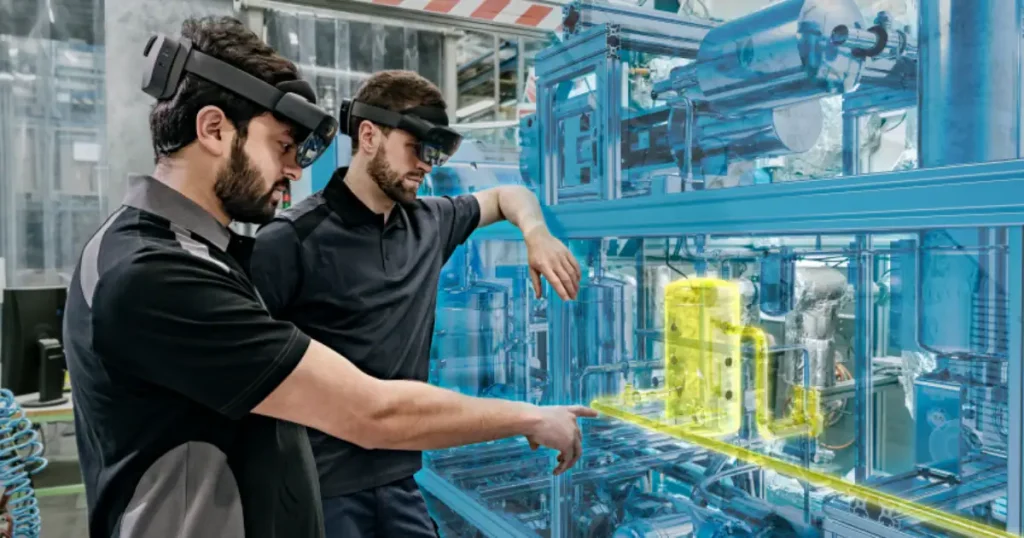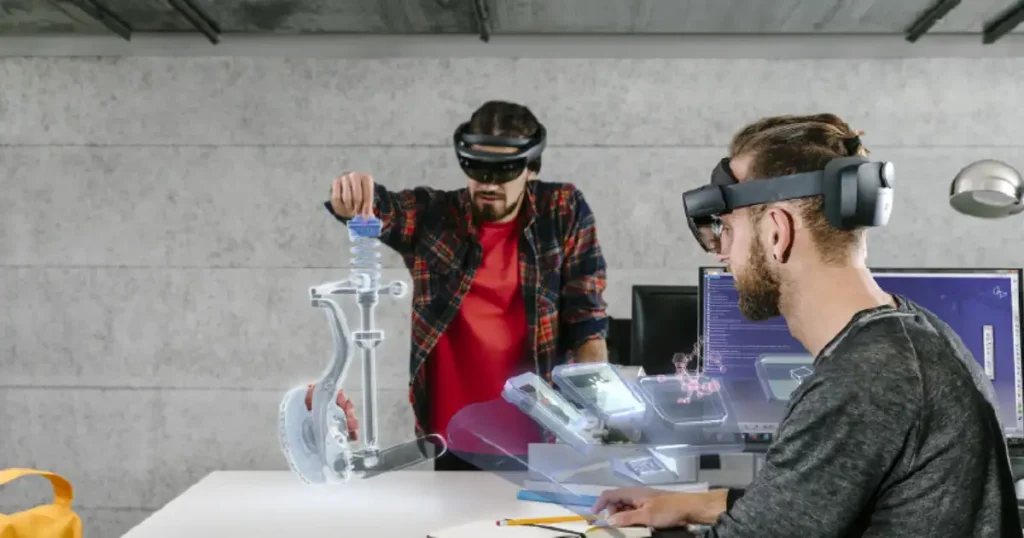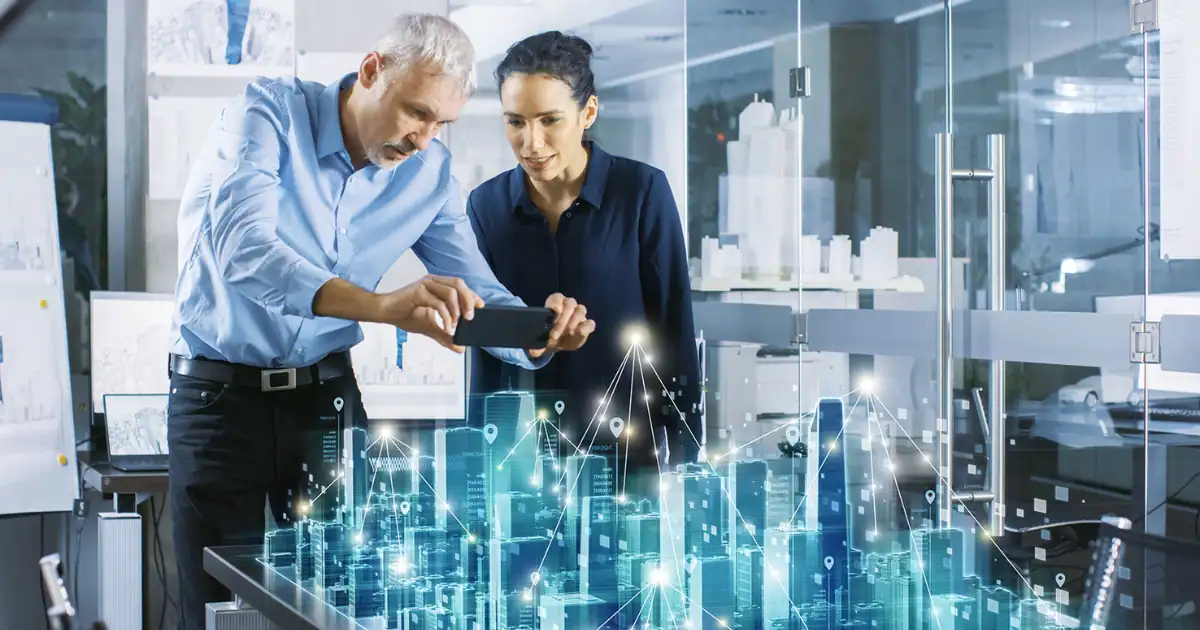The use of 3D visualization has become a crucial tool in many industries. It has changed the way people design and make decisions. 3D visualization is the process of creating a three-dimensional image of an object or environment using computer technology. It is important because it allows people to see complex ideas more realistically and understandably.
3D visualization can be used in many fields, such as architecture, engineering, product development, or urban planning. It helps people make better decisions and understand things more clearly. This article will explore the benefits, challenges, and future possibilities of 3D visualization.
Advantages of 3D Visualization
3D visualization has a lot of benefits that can help people better understand and communicate complex ideas. It’s like being inside a virtual world that allows you to see things from all angles and get a deeper understanding of what you’re looking at. This can be very useful when making important decisions, as it helps everyone involved see the big picture and make informed choices. It also makes it easier for designers, stakeholders, and end-users to share their ideas and communicate with each other more clearly.
Enhancing Understanding and Communication:
Let’s talk about how 3D visualization can help people understand complex concepts and designs more easily by showing them in detail. We’ll also explore how immersive experiences can help people get more involved and understand things better. Finally, we’ll see how 3D visualization can make it easier to explain ideas and proposals to others in a clear and concise way.
Empowering Informed Decision-Making:
Learn how 3D visualization tools can help people make better decisions by showing them different design options and their consequences. Discover how interactive features and quick responses can help people explore various scenarios and make informed choices.
Driving Efficiency and Cost Savings:
Discover how 3D visualization can help businesses save time and money. By creating digital designs and prototypes, companies can work more efficiently and avoid costly errors. 3D visualization can also speed up the design process and make it easier to solve problems. Businesses can adopt this technology to benefit from lower production costs, less material waste, and quicker project completion times.
Applications Across Industries
3D visualization is a powerful tool that can be used in many different industries. It helps people design and plan things in new and exciting ways. Whether you’re an architect, engineer, product developer, or urban planner, 3D visualization can help turn your ideas into real-life creations. It’s an important part of making sure that things look and work the way they’re supposed to.
Revolutionizing Design Practices:

3D visualization is changing the way architects and interior designers work. It helps them create more accurate images of buildings and spaces, which makes it easier to plan and design. By using special computer programs and virtual reality tools, designers can see and explore their designs in 3D, which makes it easier to make changes and improve the design.
Innovating Product Development:
Learn about the amazing ways in which 3D visualization technology is transforming the way products are designed and developed. With 3D visualization, engineers and designers can create, test, and refine prototypes faster and more accurately than ever before. Discover how virtual prototyping and simulation tools are speeding up the product development process, resulting in faster product launches and more innovative products.
Technology and Tools
The world of 3D visualization is constantly changing, and it provides a wide range of tools and platforms to help people with designing and making decisions. From virtual reality to augmented reality and advanced 3D modeling software, these tools allow users to create immersive and interactive experiences that go beyond traditional boundaries.
Evolving Technologies:

- Discover the latest breakthroughs in 3D visualization technology, including exciting developments in virtual reality (VR), augmented reality (AR), and mixed reality (MR) applications. Learn how these technologies enhance the quality and detail of 3D visualizations to make them more realistic and immersive. We’ll also discuss the potential implications of these advancements in hardware and software for future applications of 3D visualization across various industries.
Versatile Software Solutions:
- Explore the different software options available for creating 3D designs and visualizations. Compare their features, ease of use, and compatibility with other software. Find out how to choose the right software for your project based on what you need, how much money you have to spend, and what you like to use.
Integration with Emerging Technologies:
Let’s discuss how we can use 3D visualization with other new technologies, such as artificial intelligence, machine learning, and cloud computing. Combining these technologies can make 3D visualization even better by automating tasks, predicting outcomes, and improving designs.
People are using these technologies together in creative ways to solve tough problems and come up with new ideas. We’ll look at some examples of this and see how it’s driving innovation.
Leveraging Cloud Computing for Scalability:
loud computing offers significant advantages for 3D visualization by providing scalable and flexible resources. It allows for the processing of complex 3D models and simulations without the need for high-end local hardware. This makes 3D visualization more accessible to small businesses and startups, enabling them to compete with larger companies by leveraging cloud-based solutions.
Overcoming Challenges and Limitations
While 3D visualization can be beneficial in many ways, it also has some challenges and limitations that need to be taken into account. These barriers must be overcome to make 3D visualization more accessible and effective across various industries. By understanding and addressing these obstacles, we can ensure that 3D visualization technologies are utilized to their full potential.
Technical Complexity:
Some difficulties people face when using 3D visualization tools. These can include the software being complicated to use, needing specific hardware to work properly, and the data not working with different types of software.
To make things easier for people, some things can be done to improve how the software works. These include making it more user-friendly, so it’s easier to learn and use and making sure different types of software can work together.
Data Integration and Quality:
- This topic is about the challenges of combining different types of data. We will explain how to manage large amounts of complex information and present it in a way that is easy to understand. We’ll also cover how to ensure that the data we collect is accurate and reliable so that the 3D visualizations created from it can be trusted. Following guidelines and standards can help different computer systems work together more effectively and share information more easily.
Accessibility and Inclusivity:
- It is important to make sure that everyone can use 3D visualization tools, even if they have disabilities or different ways of learning. This means that we need to find ways to make the tools easier to use and understand for everyone.
- One way to do this is by designing interfaces that are inclusive, which means they work well for everyone. We can include different ways to control the tools, like using voice commands or touch screens. We can also make it possible to change the settings to fit people’s preferences.
Ensuring Ethical Use of 3D Visualization:
Ethical considerations are paramount when using 3D visualization. It is important to address issues related to data privacy, consent, and representation. Ensuring transparency and fairness in the creation and presentation of 3D visualizations is essential. By adhering to ethical guidelines, we can prevent misuse and build trust among users and stakeholders.
Future Directions and Opportunities
In the coming years, 3D visualization has exciting possibilities that can lead to new and improved developments in many different areas. By using the latest technologies, working together across different fields, and addressing society’s needs, we can unleash the full potential of 3D visualization and create positive changes.
Emerging Technologies:

- Let’s talk about how new technologies like artificial intelligence, machine learning, and blockchain can change how we see things in 3D.
- AI and machine learning can help us improve 3D images by allowing computers to make predictions and improve designs.
- Blockchain can help us keep our 3D images safe and secure. It also helps us ensure that the information we use to create these images is accurate and not tampered with.
Teamwork Across Fields:
Collaboration across different fields helps advance 3D visualization research and applications. To achieve better results, academia, industry, and government agencies can collaborate to tackle complex challenges and drive innovation. Successful interdisciplinary projects that leverage the expertise of diverse stakeholders to push the boundaries of 3D visualization exist as examples.
Social Needs Response:
Discover how 3D visualization can help tackle critical social issues such as climate change, healthcare disparities, and urbanization. Explore the potential of 3D visualization in driving public engagement, raising awareness, and supporting evidence-based decision-making on environmental and social concerns. Learn about projects and initiatives that are leveraging 3D visualization to promote sustainable development, empower communities, and advance social equity.
Promoting Lifelong Learning and Professional Development:
As 3D visualization continues to evolve, continuous learning and professional development are crucial. Professionals in various fields must stay updated with the latest tools and technologies. Offering training programs, certifications, and workshops can help individuals enhance their skills and remain competitive in their respective industries.
User Experience and Human-Centered Design
When creating 3D visualization tools, it’s important to focus on user experience and human-centered design principles. By prioritizing users’ needs, preferences, and interactions, stakeholders can create immersive and intuitive experiences that improve engagement and help with decision-making.
User-Friendly Interfaces:
It’s important to make 3D visualization tools easy to use and understand and how we can make them even better. This includes things like how the tool looks, how we move around inside it, and how we interact with it. We’ll also look at some ways to make the tool work better for everyone, no matter their abilities or experience. Lastly, we’ll check out some cool examples of tools that are simple, clear, and easy to use for 3D visualization.
Incorporating User Feedback:
To improve 3D visualization tools, it’s important to gather user feedback throughout the design and development process. This helps to make changes and improvements gradually. A few ways to get user feedback are through testing, surveys, and usability studies. The input can then be incorporated into the design cycle.
Including end-users in creating and refining 3D visualization interfaces can be very beneficial. Co-design and participatory design approaches can be used for this purpose. This helps ensure that the final product meets the users’ needs.
Conclusion
The journey through 3D visualization has shown that it can transform many areas, from design to decision-making to addressing societal issues. It has the potential to be a powerful tool for innovation and progress. However, using this technology responsibly means considering ethical considerations, ensuring inclusivity, and addressing societal impacts.
By prioritizing the user experience, investing in education and training, and fostering interdisciplinary collaborations, we can unlock new possibilities and drive positive change through 3D visualization. As we move forward, we need to be vigilant in our commitment to ethical principles, sustainability, and social responsibility. This will ensure that 3D visualization continues to have a positive impact in the future.
Frequently Asked Questions (FAQs)
Q: How can I get started with learning 3D visualization?
A: You can start by exploring online tutorials, courses, and resources available on platforms like Coursera, Udemy, and YouTube. Additionally, consider joining online communities and forums dedicated to 3D visualization to connect with other learners and professionals in the field
Q: What are some common software tools used for 3D visualization?
A: Some popular software tools for 3D visualization include Autodesk Maya, Blender, SketchUp, Cinema 4D, and Unity. Each software has its strengths and applications, so it’s essential to choose one that aligns with your specific needs and goals.
Q: How can 3D visualization be used in marketing and advertising?
A: 3D visualization can be used in marketing and advertising to create visually compelling content, such as product renderings, architectural visualizations, and virtual tours. It allows businesses to showcase their products and services realistically and engagingly, capturing potential customers’ attention.
Q: Are there any ethical considerations to keep in mind when using 3D visualization?
A: Yes, ethical considerations in 3D visualization include issues related to data privacy, consent, representation, and bias. It’s essential to ensure transparency, respect user privacy, and strive for fair and accurate representations in visualizations to uphold ethical standards.
Q: How can 3D visualization contribute to sustainability and environmental awareness?
A: 3D visualization can contribute to sustainability efforts by simulating and visualizing sustainable design practices, such as green building techniques and renewable energy solutions. It can also be used to raise awareness about environmental issues and inspire action through immersive storytelling and interactive experiences.



